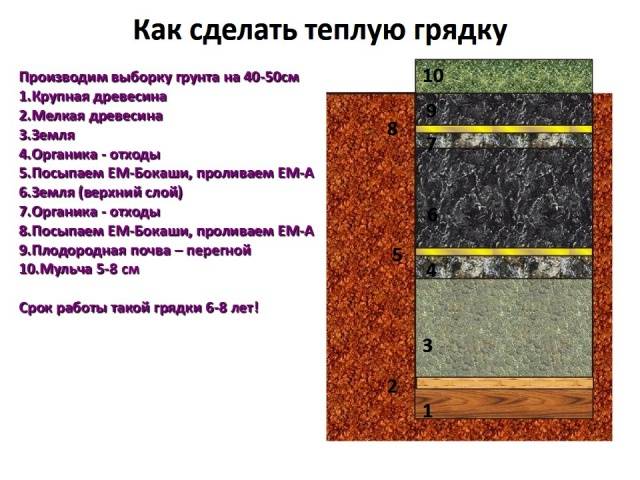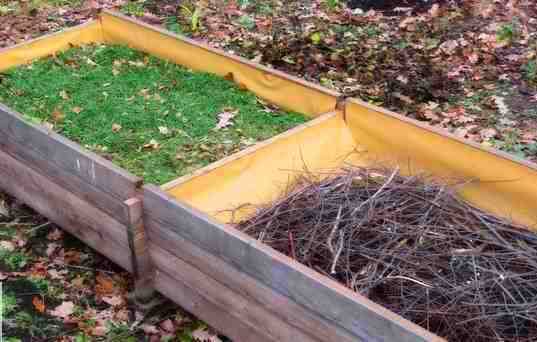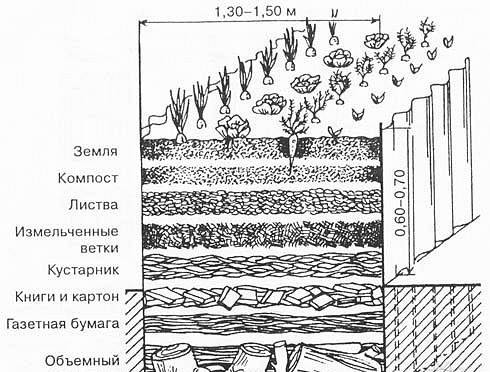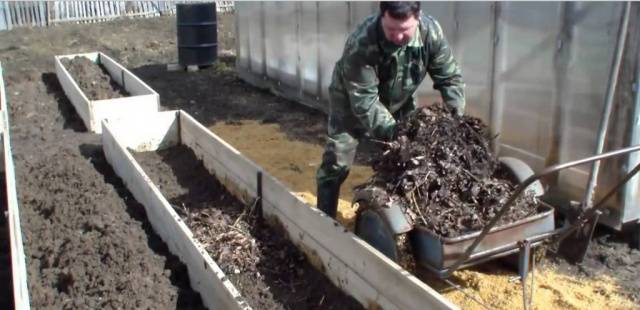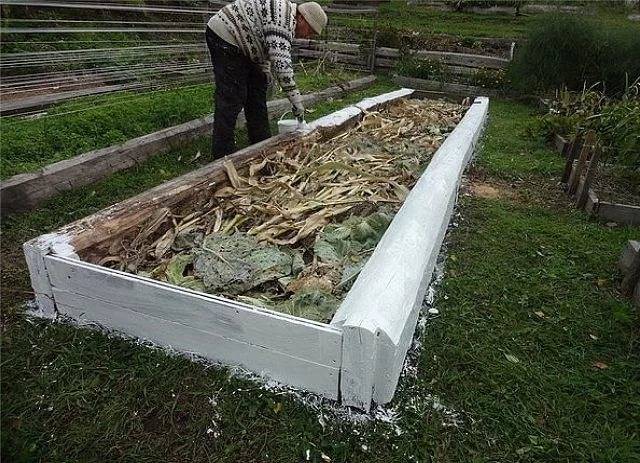Content
Any gardener wants to get an early harvest of vegetables. To achieve such results will only work with the installation of a greenhouse. However, not every vegetable grower is able to afford high costs. It is easier to make a greenhouse by stretching a transparent film over the arcs, but such a primitive design is not able to provide the proper microclimate for garden plants. The best results were shown high warm beds, allowing you to get a harvest of vegetables 3 weeks faster.
Advantages of using technology
To figure out whether it is worth making warm beds on your site, let's look at the advantages of this method of growing early vegetables:
- A warm bed is located above ground level. This is a big plus when growing vegetables in regions with cold climates and frequent rainfall. Firstly, the soil inside the garden warms up faster. If frozen areas are still observed in the shade in the garden, then on the elevation the fertile soil is ready to accept seedlings. Secondly, in a rainy summer, the plants on the hill will not get wet 100%.
- When arranging warm beds, organic matter is used. Its decomposition produces heat and nutrients for plants. The process lasts at least 5 years, and during this time early vegetables can be grown. In the future, the fertile soil does not lose its nutrients and is used to grow other plants, and new layers are poured inside the fence.
- Organic has a positive quality - it retains moisture well. If an ordinary earthen embankment in the fence needs to be watered more often, then a warm analogue requires watering 1-2 times per week. Using drip irrigation caring for gardening is simplified in half.
- During the decay of organic matter, a large amount of heat is released, which has a positive effect on the rapid germination of seeds. The plant that emerged from the grain immediately receives nutrients from the compost.
- The technology makes it possible to obtain ready-made compost without placing a separate heap. Organics are folded in layers inside the fence, so warm beds in the spring are immediately ready for use.
- You can equip a warm bed in the open air or inside a greenhouse. The location does not affect the harvest. Only if the bed is set up on the street, in addition, arcs are installed above it and the film is stretched.
- The technology is convenient for the gardener in terms of growing vegetables. The soil covered with mulch during rain or watering does not splash with water droplets, contaminating the fruits. There are few weeds between cultivated plants, and it is easy to pull them out of loose soil.
If you liked the arguments of the advantages of the technology, then you can try to plant the first pariah of plants on a warm garden bed with your own hands in the spring.
Correct stacking of organic layers
The question of how to make a warm bed in the spring is not entirely correct, since its contents begin to be prepared in the fall. But if you didn't have time to make a fuss in time, this work can be done in the spring, only organic matter is more difficult to find. Depending on the depth of the groundwater, the type of construction is selected. In arid lands, warm beds are immersed in the ground. They are flush with the ground or slightly raised.On land plots with a high level of groundwater, high warm beds are made. In any case, a prerequisite for the correct manufacture of the garden bed is its fence. Any building material is suitable for the manufacture of boards. Most often, slate or boards are used.
An important question remains after erecting a warm bed with your own hands what to put the first on its bottom, as well as what is the further sequence of layers. To get good compost, there is a rule of order for placing organic matter. The photo shows the correct layering, but it is quite complex. Most often, gardeners lay the following layers:
- The bottom of the pit is covered with large organic matter, that is, thick wood. You can use uprooted stumps, branches, in general, everything wooden, which is superfluous on the farm. Wood perfectly retains moisture inside the compost heap. The larger the organic matter is used for the lower layer, the more years the warm bed will last.
- The second layer is laid with fine organic matter. For these purposes, the stems of garden plants, thin branches of shrubs, paper, leaves fallen from trees, grass, straw, etc. are suitable.
- The third layer stimulates the organic decomposition process. Usually, manure or unripe compost is used for these purposes. Cut out layers of sod are laid on top together with grass, only with the roots up. The last top layer is covered with ready-made compost.
Each layer of a warm bed is moistened with water. The air between the elements of large organic matter and moisture will accelerate the decay process and an increase in temperature inside the garden. Some vegetable growers water a warm bed with biologically active preparations to accelerate the formation of compost.
The video shows the filling of a warm bed:
Self-production of a warm bed
Now we will consider the step-by-step making of a warm bed with our own hands using the example of a wooden box. Wood is not the best material for long-term boarding, but it is an environmentally friendly material.
So, let's see how the manufacturing process takes place correctly:
- It is immediately important to determine the size. You can take any length that the site or greenhouse allows. It is advisable to take the width of no more than 1 m, maximum - 1.2 m. Otherwise, it will be bad to take care of the crops. The depth of the pit depends on the groundwater level and the composition of the soil. Usually a layer of fertile soil with a thickness of 40-60 cm is removed. The height of the sides is made up to a maximum of 70 cm.
- By the size of the future warm beds of boards knock down box... The structure is installed on the ground and along the contour on the outside of the sides on the ground, markings are made for the pit.
- The box is set aside. Sod is removed from the marked area in layers together with grass. For these works, you will need a sharp shovel. Pieces of turf are folded to the side. They come in handy for the top layer.
- When the hole is dug to the required depth, a knocked down wooden box is installed in it. Sometimes gardeners resort to tricks, additionally insulating the structure. To do this, the sides are lined with pieces of polystyrene or expanded polystyrene, and the bottom is tightly covered with empty plastic bottles with twisted corks.
- Further, according to the already considered device of warm beds, layer-by-layer laying of organic matter is performed. When all the layers are laid, the pile is poured abundantly with water, after which it is covered with PET film.
- If organic matter was laid in the spring, then after two weeks it is possible to sow seeds of garden crops or plant seedlings on it. Immediately after planting, the soil is sprinkled with dark mulch. In spring, a dark surface will be better warmed up by the sun's heat.When the summer heat comes, light mulch from sawdust or straw is used for backfilling. The light surface will reflect the scorching rays of the sun, preventing the plant root system from overheating.
The video shows the device of a warm bed:
Now you know how to equip warm beds with your own hands in your summer cottage. This is done the same way in spring or autumn. It's just that the autumn bookmark is more profitable due to the large amount of fallen leaves and other organic debris.
